Here is a overview of the Pacifica iris species. To discover more, use the WILD IRIS button
above, then go to ID SPECIES and chose then one you want to know more about,
or click on the picture. Remember, these plants easily cross, so in
an area where their ranges overlap, you might be looking at a hybrid
PCI.
| Photograph |
Key Features |
Distribution |
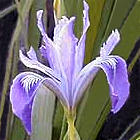 |
1. Douglas iris (Iris douglasiana)
Short floral tube, wide leaves, branched stems with multiple flowers, triangular seed capsules |
Grasslands and sunny meadows near the Pacific Ocean, common between southern Oregon and Santa Barbara in California |
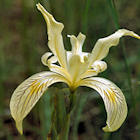 |
2. Siskiyou iris (Iris bracteata)
Short leaves overlap along stem, short floral tube |
Pine forests of southern Oregon and adjacent Siskiyou mountains of California |
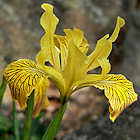 |
3. Golden iris (Iris innominata)
Grass-like leaves forming clumps, often with many golden flowers |
Inland forests of the Klamath mountains of southwestern Oregon, possibly extending to northern California |
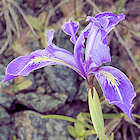 |
4. Thompson's iris (Iris thompsonii)
Grass-like leaves forming clumps, often with many lavender or purple flowers |
Grassy slopes on forest edges; lower Klamath mountains of northern California and southwestern Oregon |
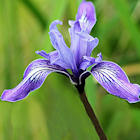 |
5. Bowl-tube iris (Iris macrosiphon)
Long floral tube with bowl-like top, stem-leaves enclose ovary |
Sunny California grasslands, coastal mountains & western Sierra Nevada foothills, sea level to 3000 feet elevation |
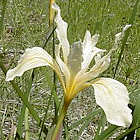 |
6. Fernald's iris (Iris fernaldii)
Yellow or cream flowers, long floral tube with funnel-like top, stem-leaves enclose ovary |
Shaded oak-bay-madrone forests of the California central and northern inland coastal ranges |
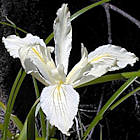 |
7. Purdy's iris (Iris purdyi)
Large, white or cream, flat-appearing flowers, short overlapping leaves along stem |
Shaded forests of the northern California coastal range, near the coast, up to 3000 feet elevation |
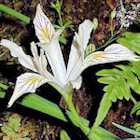 |
8. Yellow-leaf iris (Iris chrysophylla)
White or cream flowers, long floral tube, very long style crests |
Pine or fir forest meadows in western and southern Oregon, northern edge of California, to 5500 feet elevation |
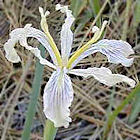 |
9. Shasta iris (Iris tenuissima)
Long floral tube, very slender and easily breakable flower parts |
Pine forests of northern California, from foothills to 6000 feet elevation |
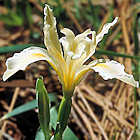 |
10. Sierra Iris (Iris hartwegii)
Short floral tube, ovary exposed, usually single plants |
Shaded yellow pine forests of western Sierra Nevada and San Bernardino-San Gabriel mountains, from 2000 to 7000 feet elevation |
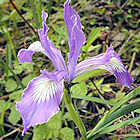 |
11. Tough-leaf iris (Iris tenax)
Strong leaves, floral tube short and stout, ovary exposed |
Meadows and shaded forests of western Oregon and southern Washington |
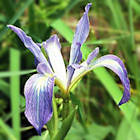 |
12. Munz's iris (Iris munzii)
Largest Pacifica iris, broad leaves, stems bear several flowers. |
Dry, open live-oak grasslands in hot Sierra Nevada foothills of Tulare County, California |











